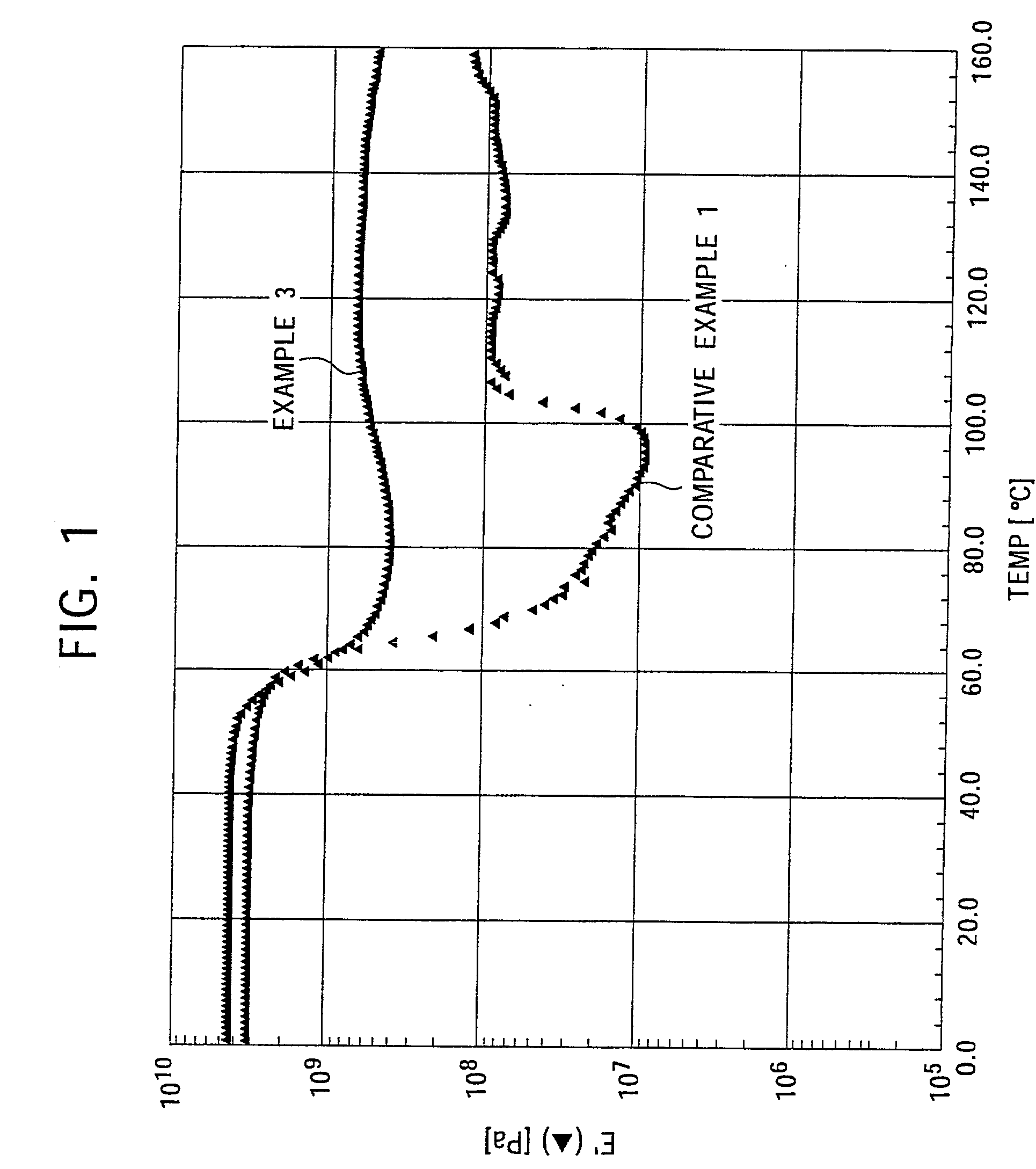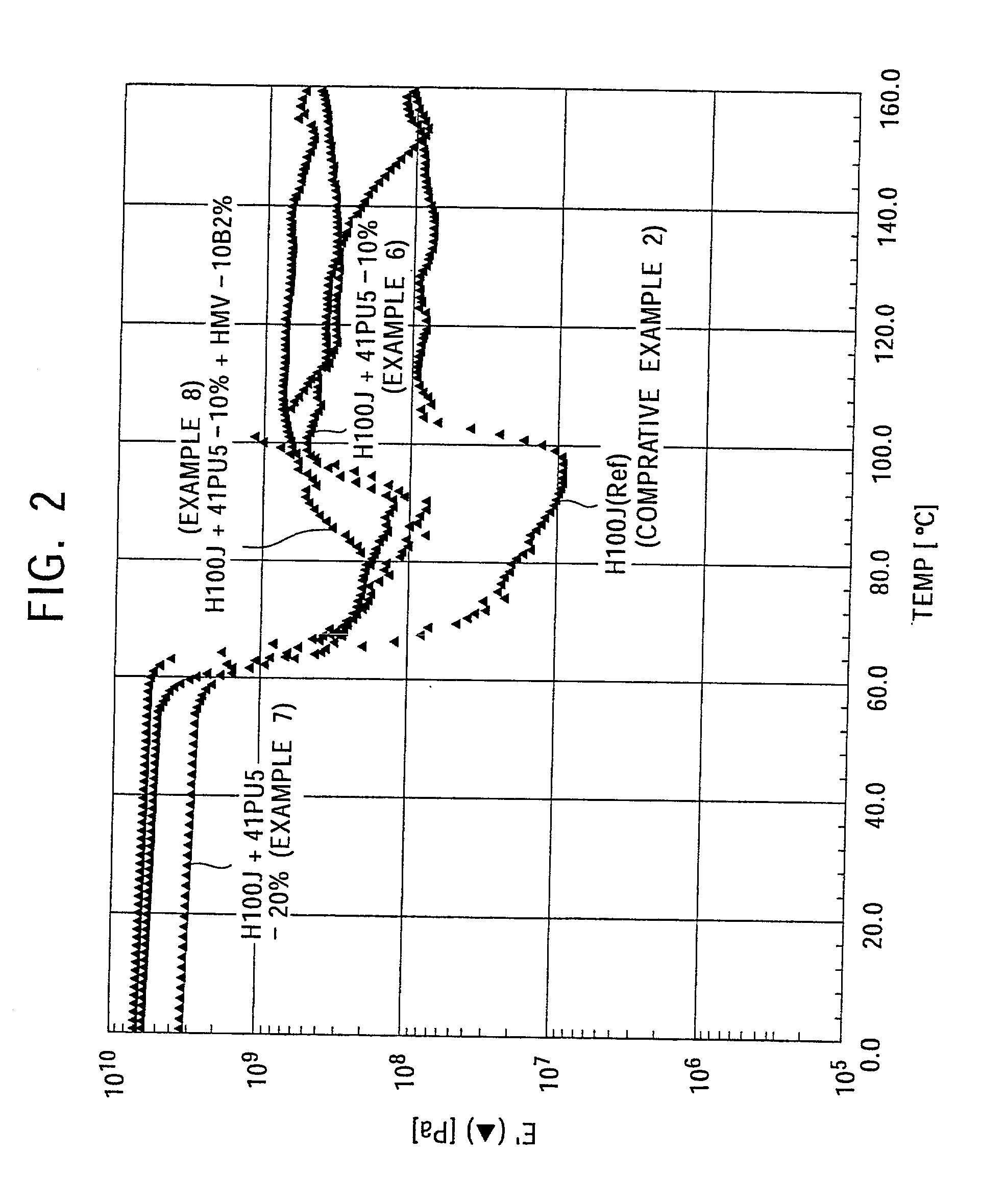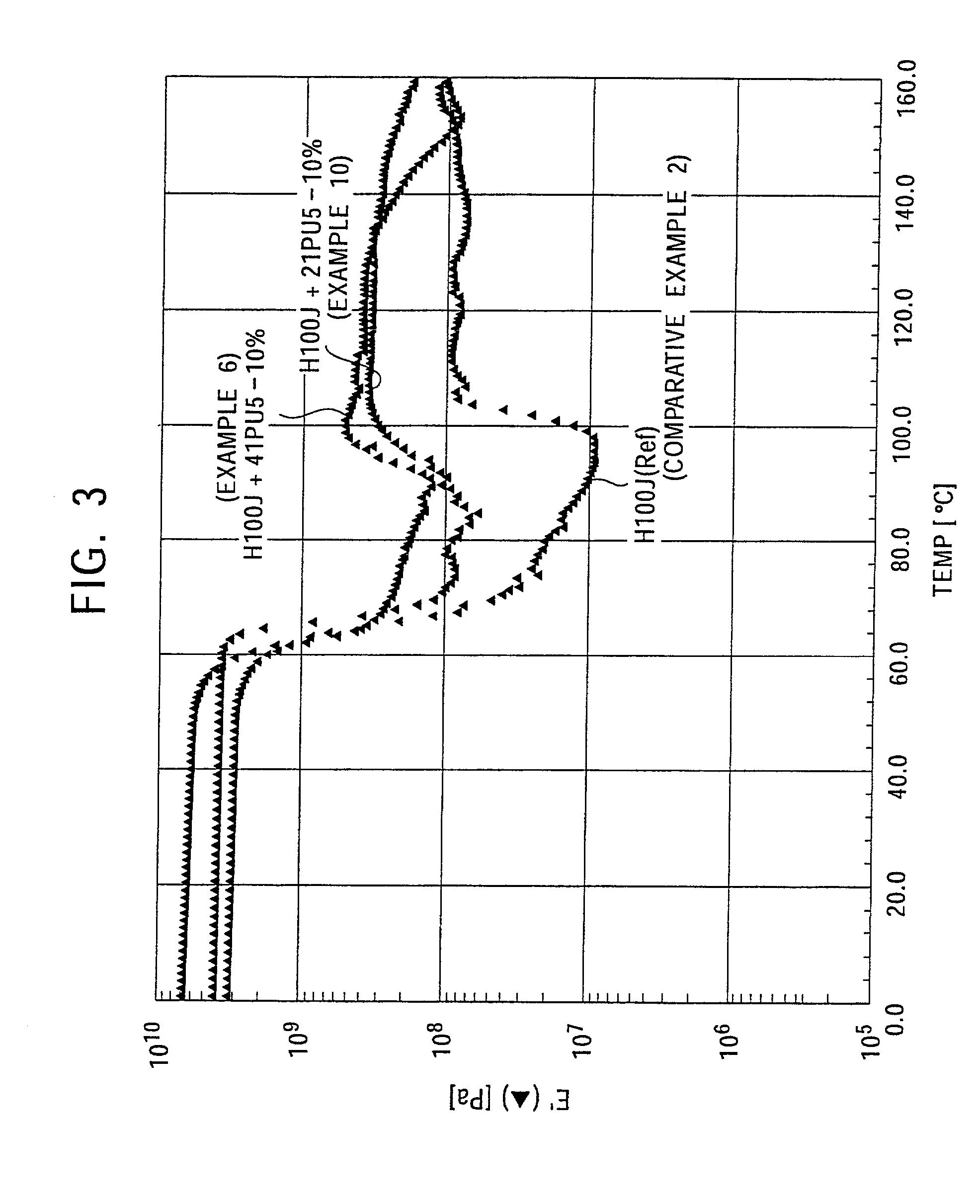Biodegradable resin material and method for producing the same
a biodegradable resin and elastic modulus technology, applied in the direction of coatings, etc., can solve the problems of large amount of waste as a whole, severe waste, and part of electronic appliances that are not recovered or recycled, and achieve the effect of increasing the storage elastic modulus
- Summary
- Abstract
- Description
- Claims
- Application Information
AI Technical Summary
Benefits of technology
Problems solved by technology
Method used
Image
Examples
example 1
[0073] Lacea H100J was subjected to aging for 3 minutes by irradiation with a microwave (microwave oven) generated from a magnetron vacuum tube, and, as a result, the storage elastic modulus of the specimen was considerably increased. Specifically, differing from Comparative Example 1, rapid lowering of the storage elastic modulus at around the Tg (60.degree. C.) of polylactic acid was not observed, and the storage elastic modulus at up to about 160.degree. C. exhibited an almost constant value.
example 2
[0074] Substantially the same treatment as that conducted in Example 1 was repeated except that 1% by weight of Carbodilite HMV-10B (manufactured and sold by Nisshinbo Industries, Inc.) was added to Lacea H100J as an additive for suppressing hydrolysis. As a result, the storage elastic modulus of the specimen was considerably increased.
example 3
[0075] To Lacea H100J was added 1% by weight of non-swellable synthetic mica MK-100 (manufactured and sold by CO-OP CHEMICAL CO., LTD.) and mixed together, and then melt-blended by means of a single-screw kneader set at 180.degree.C. and the resultant composition was pelletized, followed by hot-pressing by means of a hot pressing machine set at 170.degree. C., thus preparing a plate material having a thickness of 1 mm. Then, a specimen cut out from the prepared plate material was subjected to aging for 2.5 minutes by irradiation with a microwave in substantially the same manner as in Example 1, and then, a storage elastic modulus was measured with respect to the resultant specimen. As a result, as shown in FIG. 1, rapid lowering of the storage elastic modulus of the specimen at around the Tg (60.degree. C.) of polylactic acid was not observed, and the storage elastic modulus in the range of about 70 to about 160.degree. C. was considerably increased and exhibited an almost constant ...
PUM
| Property | Measurement | Unit |
|---|---|---|
| particle diameter | aaaaa | aaaaa |
| particle diameter | aaaaa | aaaaa |
| temperature | aaaaa | aaaaa |
Abstract
Description
Claims
Application Information
 Login to View More
Login to View More - R&D
- Intellectual Property
- Life Sciences
- Materials
- Tech Scout
- Unparalleled Data Quality
- Higher Quality Content
- 60% Fewer Hallucinations
Browse by: Latest US Patents, China's latest patents, Technical Efficacy Thesaurus, Application Domain, Technology Topic, Popular Technical Reports.
© 2025 PatSnap. All rights reserved.Legal|Privacy policy|Modern Slavery Act Transparency Statement|Sitemap|About US| Contact US: help@patsnap.com



